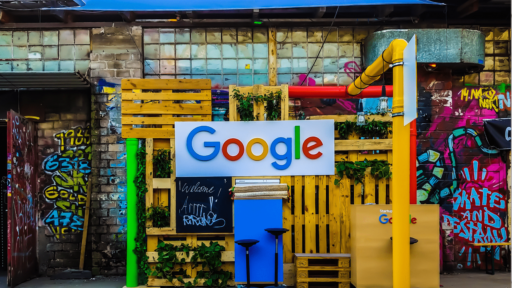It goes without saying (but we’re going to anyway) that you’re looking to get as many eyes on your content as possible. Otherwise, what’s the point in creating it in the first place? You’re reading this blog because you saw the magic words ‘SEO boost’ and you’re wondering how social shares come into things.
Social media platforms were built for mass sharing and, together, are now used by over half of the world’s total population. However, many people think the work ends there. ‘If people are sharing my content, I’m good to go, right?’ Wrong.
In the age of convenience, don’t be fooled into thinking the ‘secret’ to skyrocket your SEO is going to be easy. Even if social media marketing isn’t your bag, it’s a simple formula but it’s going to take a bit of effort on your part. Luckily, you don’t have to do it alone.

This handy guide is all about these first 2 steps; exploring the definition of social shares and how to increase the likelihood of them before you even start writing your content. Concluding with two sure-fire tools at the end for a guaranteed increase in shares.
Why are social shares important for SEO
We’ve written an entire blog exploring the relationship between social signals and SEO and if you’re serious about improving your domain authority, we’d recommend giving it a read. It’s one of the most widely-debated subjects within Search Engine Optimisation, so if you’d like a deeper understanding, click here.
For those of you who have read it already (gold star for you) or need a quick recap, here’s a brief summary of the ‘why’ before we explain ‘how’.
As stated in our opening infographic, the path to increased engagement and backlinks starts with visibility. The more your content is shared, viewed and talked about by users, the more Google will favour a specific domain.

Source: Oberlo
Facebook still dominates as the most popular sharing platform and though there might not be a direct link to SEO, according to Google, it’s hard to argue with this case study. After achieving over 130,000 Facebook shares to their web page, this company shot up the rankings for specific competitive keyword phrases. Correlation or causation; it’s still a brilliant result of strong content creation and an effective social media sharing strategy.
Whether it’s Facebook, Twitter or LinkedIn; if you create high-quality content that’s shared by many on social media, you’re more likely to get backlinks and increase your SEO as a result.

Source: GIPHY
Alright already…here goes!
Relevant, trending content is always shareable
So this section falls before ‘step one’, when planning what will become your ‘great content’. Trending content is so-called because it’s already being widely shared; this is ‘social proof’ in action. It’s used a lot by eCommerce businesses to find out what consumers are interested in, so they can capitalise on the current conversation. Why shouldn’t you do the same?
As Sujan Patel said: “Staying on top of trending content gives you an edge. People are more likely to follow you and listen to what you have to say if you’re consistently sharing or producing quality content that your audience cares about…”
This doesn’t mean you should hop aboard any and every trending topic, especially those you know nothing about. Choose your subject matter and the best times to get involved wisely. There’s no point trying to have your say on a buzz-topic that’s petering out. Buffer provided an excellent example of this when they got involved in the #paytalk trend, back in 2015. Not only did they stay true to their self-proclaimed “default to transparency” value but they also gathered a huge number of retweets, clicks and sparked many conversations which helped build their brand.
While all forms of social media are great places to start (think the previously mentioned Twitter’s trending hashtags) there are various tools, both free and paid, to help you along the way.
Here are a couple of big names:
Google Trends
A powerful marketing tool, when used correctly, is the popular Google Trends. This free tool uncovers the popularity of a search term within Google and allows you to instantly see if certain keyword searches are rising or declining. On the dropdown menu of Google Trends, you’ll find Trending Searches, which allows you to see the type of content users have been searching for daily, according to their location. Though you’ll mostly find this full of celebrities and influencers, take some time to establish what you could have a knowledgeable say in.

Source: Google Trending Searches in the UK
BuzzSumo
In a nutshell, BuzzSumo tracks social share counts and analyses content to identify trends within all search terms and URLs. If you’re looking to find out the answers to each of the following questions, BuzzSumo is a one-stop-shop:
- Is this topic area saturated with content? How many articles are being published each week? How can we stand out?
- What are the emerging topics or content areas where engagement is growing?
- What post types are gaining the most traction and on which social networks?
- Has interest in this topic peaked, as measured by shares, or should I act quickly to take advantage of growing interest?
- Are average shares declining or increasing for specific topics and formats?
- In which niche areas and networks do I have the best chance of gaining attention and engagement with my content?
Source: BuzzSumo
Each of the above are all things to bear in mind when finding and getting involved in trending content. Get it right and you might just hit the social-sharing jackpot.
Experiment with shareable headlines and copywriting
Much like online dating apps, something needs to catch the eye of your target audience to stop the endless conveyor-belt of content. According to copyblogger, “On average, 8 out of 10 people will read headline copy, but only 2 out of 10 will read the rest.” A 2/10 click-through rate?! Holy smokes!
It doesn’t matter how great your content is if your headlines are letting you down. Your headline is your piece of content’s first impression with readers. Get it right and you can drive more clicks. Get it wrong and you lose out on potential traffic.
Never fear, friends, for you are en route to magnetic headlines! It just takes some practice and the help of some handy tools:
CoSchedule Headline Analyzer
Source: CoSchedule
One of the most popular copywriting tools out there is CoSchedule’s simple Headline Analyzer. Now, headlines are a tricky beast and there may seem to be no rhyme or reason to what makes people click but it’s a great starting point. You’ll need to provide a few details to access your results but you’ll then be greeted with an overall score out of 100. It will also provide a quick summary of the types of words and tone that should be within your title to make it score higher. Heck, we even had a play with it for this blog! Would you have clicked on some of the earlier choices?

Source: CoSchedule
Grammarly
Grammarly is always our final port of call when writing blogs at Quuu. From correcting typos to picking your tone (Formal? Conversational?) you have to put some time in to review the changes but it’s worth it. One of the most common suggestions from the app is simplifying. The readability level of your piece should always be as low as you can get it (aim for around 8th grade) to get your point across in a straightforward way.
As a side note, shorter descriptive words are also much better for those viewing on mobiles. This research by Nielson indicates “mobile use implies less patience for filler copy”. Although it was written in 2011, they have stood by the findings in more recent studies.
Still want more? We aren’t as involved in the content creation side of things at Quuu, so here are a couple of pieces from those that are:
- If you’re in a rush and would prefer some quick suggestions to note down, here are 10 to get you started from the copywriting experts.
- Neil Patel wrote a more in-depth, step-by-step guide to writing powerful headlines.
Make social media profiles and content visually-appealing
Humans are visually-motivated creatures. Have you ever visited a site and quickly left because the content or formatting was out-dated, incorrect or just plain terrible?
You don’t have to be a graphic or web designer to ensure your profiles and content are aesthetically-pleasing. Websites like Canva and Visme make the whole process super easy and if you’re looking for some high-quality images to use in your blogs (without having to hire a photographer) then Unsplash is the perfect place to start.
As summarised in this handy blog post by Visme, “Content is constantly evolving. White papers are no longer the secret to inbound marketing success; visual content marketing is becoming the norm.”
We’ve summarised a few of the top advantages from the blog above while comparing with some of the drawbacks:
| Advantages of Visual Content | Drawbacks of Visual Content |
| Attention-grabbing | Creation can be time-consuming |
| Easier to process and recall | May need external skills to produce |
| Colours influence human emotions (check out this Facebook Ads psychology guide) | The ideal length of video or infographic varies depending on the audience |
| Improves social engagement | May require a budget |
| Video is still the highest-performing content | Less flexible to change |
Or we could practice what we preach and display it in an infographic:

See how much better that looks?
Optimise for specific social media networks
Although all social networks are open to all ages; you’re unlikely to find your Grandma on TikTok or your kid brother on LinkedIn. Certain demographics tend to favour specific platforms and Hootsuite has put together this handy infographic demonstrating the fact.

Source: Hootsuite
With this in mind, the content you’re looking to share will undoubtedly work better on certain platforms over others. If you’re looking to stack up those Facebook likes, you need to ensure you’re writing the right kind of content for the audience on that platform. Therefore, as a general rule of thumb, it may be best to keep the visual user-generated content for Instagram and the marketing analytics dissertation for Twitter or LinkedIn until you know your audience better.
Profile Optimisation
Wherever you’ve got a profile, it should be fully-filled and optimised. Take some time to check-off the below steps to ensure that people know the content they’re sharing is coming from a reputable, high-quality source.
- Complete profiles: Incomplete profiles can leave consumers wondering about who you are and what you do
- Variety: Ensure your brand awareness extends to all applicable social media networks
- Consistency: Use the same photo, handle and bio (if possible) for each social network so you’re easily accessible and recognisable
- Test links: Before and after you post, make sure all media is working as it should
- Optimise images: Every social network has different optimal dimensions and quality restrictions so keep on top of these
- Be discoverable: Do your keyword research and make sure your profile is appearing within social network search engines
According to Statistica, at the time of writing, over 98% of Facebook users worldwide access it via mobile. Take it from Moz: “If your site is already well optimized for search engines, there are only a few additional things that you need to think about when optimizing for mobile devices” – it’s too important not to! Google places a huge emphasis on content being mobile-friendly and if you’re looking for an introduction to Accelerated Mobile Pages (AMP) check out their in-depth developer’s guide.
Content Optimisation
Once your profiles are optimised, it’s time to look at the content itself:
OpenGraph
If you’ve seen dodgy content shared on Facebook and LinkedIn with broken images and weird symbols in the metadata – you’ll know you want to avoid this. Take control of your content by implementing the correct OpenGraph tags. Without them, the result will be determined by the crawler guessing. LinkedIn explains how to avoid this on their site but Facebook goes one step further with their handy Sharing Debugger tool.

Source: Facebook
Twitter Cards
With Twitter Cards, you can (sort of) extend your 280 character tweet limit with photos, videos and media, just by simply adding a few lines of markup to your webpage. Users who link to your content will have this “card” added to the tweet and visible to their followers. The more aesthetic your content looks, the more likely it is to be shared.

Source: Twitter
Top tip: Use WordPress plugins? Customise the titles and meta descriptions of your content with the WordPress SEO by Yoast plugin to further enhance your content for social shares and search results.
Make social shares easy with social sharing buttons
This is a simple step but you wouldn’t believe how often it’s overlooked. With lightning-fast broadband and the rise of UberEats, we human beings have become pretty lazy. What could make distributing your content easier than some social share buttons right next to it? If you’re thinking you wouldn’t know where to begin with creating these, thankfully, some clever humans have already made this a reality!
Two of the most popular (with very similar names) are AddThis and ShareThis – it’s down to personal preference which you choose as both are free! Showcase your most popular content by displaying the number of shares and even include follow buttons for your Twitter or Facebook page for good measure. Between them, they’re compatible with the most popular CMS apps including Google AMP & WordPress and come in a variety of formats, as shown below.

Source: ShareThis
Another clever use of social media buttons comes from digital marketing powerhouse, Content Marketing Institute. They make a point in each of their articles to include several ‘Click to Tweet’ CTA buttons for clarity and consistency. In a split second, the user is transported to their Twitter feed with a displayed tweet tagging the writer and host site, along with a memorable quote (and appropriate hashtags) from the piece.

Source: Content Marketing Institute
Guarantee social media shares with these tools
All of the above steps highlight manual, organic ways of creating content that can result in increased social shares. However, if we told you that there were two indisputable methods which, when paired together, guaranteed success…would you believe us?

Source: GIPHY
Quuu Promote
In the name of fairness, we’d love to put ourselves as an option between similar tools but the truth is; there isn’t anyone else out there that does what we do. Quuu Promote is a unique content marketing tool that drives hundreds of opportunities to engage with a relevant audience on social media platforms.
Quuu Promote works by sharing your post with real people, who then share it with their audiences on Twitter, LinkedIn and Facebook. The people sharing your posts are all Quuu.co users who have signed up to receive interesting content suggestions on chosen topics they’re interested in. So, every promotion with Quuu Promote is organic.
Before signing up, you can browse our current categories, pick out those closest to your niche and check out your ‘expected shares’ results.

Source: Quuu Promote
Simply submit your content and once it’s hand-reviewed and approved by our content team, just watch the shares roll in.
You
Nope, this isn’t the name of some fancy new social sharing tool – we’re talking about you.

Source: GIPHY
There is a strong correlation between social shares and increased SEO (as mentioned in our blog at the beginning) however, a lot of it is down to what you do after the content has been shared. Backlinks are your best bet for exposure and boosted SEO but to be able to acquire these, you need to be interacting with those who have shared your content.
Once you start seeing shares (either organically or via Quuu Promote), you can then respond to users on Twitter, for example, who have shared your post and ask them a question relating to it. Twitter is easily the best platform for driving engagement, as you can directly contact anyone, even if you’re not connected. Other networks can be a little more tricky due to their privacy settings.
Conclusion
To summarise, you should now have a solid understanding of the relationship between social shares and SEO. Everything from planning your content, to sending it live, and even what to do afterwards; the above methods all work best when you take some time to:
- Get involved in relevant, trending content (when applicable)
- Experiment with the copy in your headlines
- Make your social profiles and content visually-appealing
- Optimise profiles and content for specific networks
- Add social sharing buttons
- Couple automated tools that guarantee social shares with some manual effort
Follow these steps and the sky’s the limit!
Do you have any solid tips on how to encourage users to share your content? We’d love to hear them in the comments below!





